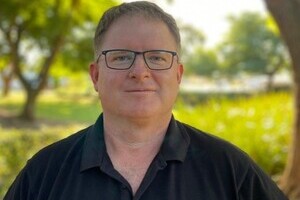
Since they came into force in 2016, the United Nations’ 2030 Agenda for Sustainable Development and the Paris Agreement have prompted many governments to rethink their “green” status, including how they approach global issues such as deforestation and controlling CO2 levels.
The UN has gone so far as to map the Earth’s terrestrial habitat, helping businesses and investors measure and minimise their impacts on natural resources and biodiversity as they undertake development projects, says Ken Everett, CEO and founder at Digital Matter.
Many countries have established their own green initiatives to help reach the overall target of reducing CO2 emissions and maintaining or increasing the volume of trees and forest cover. With some lofty goals in place at the country level, these projects largely have to be completed at the municipal level. Many of these initiatives are leveraging Internet of Things (IoT) data to restore forests and ecosystems around the world.
One of these projects is in the Netherlands, where the objective is to plant 100 million trees by 2030. The goal of the project is to develop sustainable methods for the cultivation, planting and care of trees and shrubs in urban areas.
Previously, the only way to collect this data was manual readings of moisture levels at each tree, a time-consuming and expensive task. Instead, the project utilises digital elements such as state-of-the-art IoT sensor technology as well as artificial intelligence (AI), and collects soil, tree and bush health data that is compiled into easy-to-use dashboards.
As part of the project, when a section of the A2 motorway in Maastricht was buried underground in a 2.3 kilometres double-stacked tunnel, a green carpet of trees was planted above the tunnel. A a park lane for local traffic was constructed, with a focus on pedestrians and cyclists.
The problem; Young trees planted in inner-city locations must overcome already difficult conditions, exacerbated by high temperatures and drought, in order to survive in their urban environments. Trees planted in the city have an average lifespan of less than 10 years, while in nature, their average lifespan is decades.
The project utilised cellular and LoRaWAN IoT devices to collect and report on critical soil, tree and bush health data to improve the survival rates of young trees. LoRaWAN devices were placed at the roots of some of these trees to measure the mineral content, temperature and humidity of the surrounding soil.
Data collected about the current state of the soil is displayed real-time via an app, phone or computer dashboard, and the greenskeeper has 24/7 access to this data. Alerts can be sent if the trees are receiving too much or too little moisture and are triggered on certain statuses and sent via email or SMS to greenskeepers so action can be taken immediately.
Additional low-power sensor monitoring applications including temperature and humidity, mineral and oxygen content, and more provide all the data the maintenance team needs to care for the trees. The solutions are portable and can move from tree to tree, without additional configuration, as the trees mature.
The result; The sensors take the guesswork out of tree management, allowing greenskeepers to see exactly when a tree needs water, fertiliser, or other treatments without site visits. During the hot and dry summer of 2018 to 2019, where there was 15 to 20% drought in some areas of the soil, not a single tree of the 1,000 planted lime trees died.
The project has had many positive effects, including environmental protection, sustainable urban development (e.g., the improvement of air quality, temperature balance, fine particulate pollution, groundwater abstraction, biodiversity, and flood protection), as well as making the common space more attractive to citizens.
As countries like the Netherlands forge ahead with their individual projects to meet the goals set by the 2030 Agenda for Sustainable Development and the Paris Agreement, tree and forest management has become a critically important part of these initiatives. IoT solutions have been developed specifically for tree monitoring and many initiatives are using IoT to monitor and manage these undertaking, ensuring that every tree planted is always at optimum health.
Digital Matter’s battery-powered asset tracking devices are used by telematics companies, systems integrators, enterprises and network operators worldwide, enabling them to customise and deploy their asset management solutions with confidence.
Digital Matter has the wide range of tested, future-proofed battery-powered IoT hardware, enabling partners to expand and scale into new vertical markets with new solution offerings that help them grow revenue. The company’s technology has been tested globally and covers a broad range of technologies, including 2G, 3G, LoRaWAN, Sigfox, Bluetooth and WiFi. In addition, products are fully supported as 4G LTE-M / NB-IoT evolves as part of the specifications for 5G.
The author is Ken Everett, CEO and founder, Digital Matter.
About the author
Ken Everett is founder and CEO ,Digital Matter (USA, Australia, NZ, South Africa). He is Tech Entrepreneur building “Connected Devices” for The Internet of Things, He Designs and brings great product ideas to life through technology.
Comment on this article below or via Twitter: @IoTNow_OR @jcIoTnow
Leave a Reply